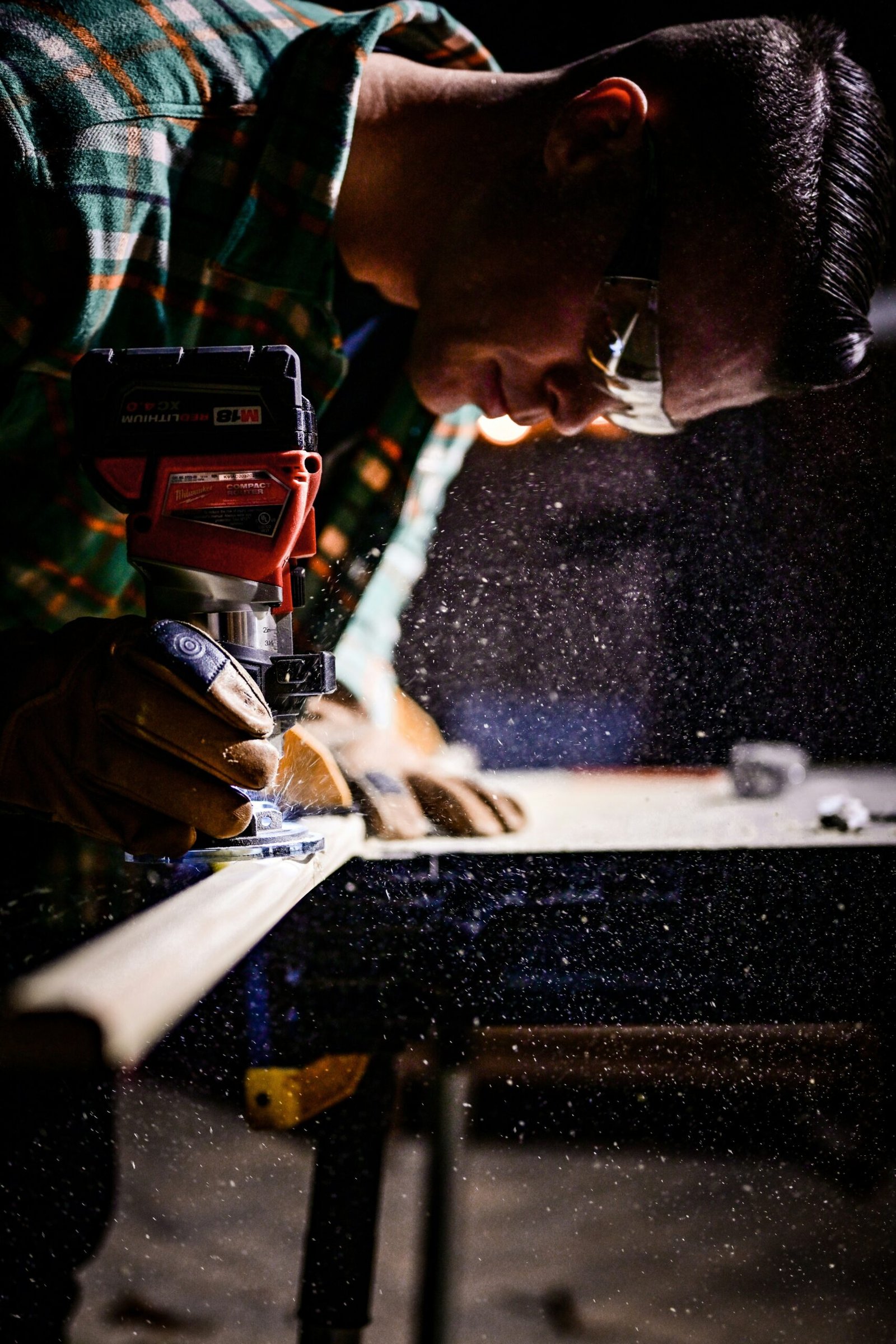Introduction to DIY Landscaping
Curb appeal plays a significant role in shaping the perception of a home’s value and aesthetics. A well-maintained and visually appealing exterior can leave a lasting impression on visitors and potential buyers, significantly enhancing the overall attractiveness of your property. One effective way to elevate your home’s curb appeal is through strategic landscaping, which doesn’t necessarily require professional help.
DIY landscaping offers an excellent opportunity to enhance your property’s exterior while reaping several benefits. By taking a hands-on approach, homeowners can save on the costs associated with professional landscaping services. This method allows for personalization, transforming the space into a unique reflection of one’s tastes and preferences. Moreover, the sense of accomplishment derived from completing a project on your own adds to the gratification, as you can take pride in the transformation driven by your efforts.
Embarking on DIY landscaping projects is both fulfilling and practical. Simple projects can effectively boost your home’s aesthetic appeal without demanding extensive expertise or investment. Throughout this blog, we will explore a variety of landscaping ideas that can be easily pursued by any homeowner. These projects will range from enhancing garden beds to creating elegant walkways, installing outdoor lighting, and adding decorative elements, all designed to enrich the outdoor ambiance and increase the value of your property.
Whether you’re aiming to improve your home’s marketability or simply seeking to create a welcoming environment, our curated list of DIY landscaping projects will serve as a comprehensive guide. Each project is tailored to be achievable with basic tools and materials, ensuring that even beginners can undertake these enhancements with confidence. Let’s delve into the world of DIY landscaping and discover how small changes can make a significant impact on your home’s curb appeal.
Creating a Welcoming Front Entry
The front entry of your home serves as the first impression for guests and passersby. Enhancing this area can significantly boost curb appeal with a few simple yet impactful DIY projects. One such project is painting the front door. Begin by selecting a color that complements your home’s exterior. Popular choices include bold hues like red or navy, or classic neutrals such as gray or white. Ensure you use exterior paint designed to withstand weather conditions. Materials needed include sandpaper, primer, exterior paint, painter’s tape, and brushes or rollers. Start by sanding the door to remove any previous paint or rough spots. Apply a primer coat, followed by two or more layers of the chosen paint, allowing each to dry thoroughly.
Adding potted plants is another way to enhance your front entry. Choose plants that are suitable for your climate and the level of sunlight your entry receives. Position planters symmetrically on either side of the door for a balanced look or create a more eclectic appearance with varying heights and pot styles. Consider using a mix of perennials for year-round greenery and season-specific flowers for vibrant bursts of color. Essential materials include plant pots, potting soil, and your chosen plants or flowers.
Updating house numbers gives a subtle but striking improvement. Choose numbers that match the style of your home, whether modern, traditional, or rustic. You will need a screwdriver, a drill, and the new house numbers. Measure and mark the placement before securely attaching the numbers.
Lastly, upgrading light fixtures can dramatically change the ambiance of your front entry. Select fixtures that match your home’s design and provide adequate illumination. Common tools required include a screwdriver, pliers, and possibly a voltage tester. Ensure power to the existing light fixture is turned off before proceeding. Remove the old fixture, connect the wiring to the new one following manufacturer instructions, and securely mount it.
By integrating these steps, you’ll create a front entry that not only elevates curb appeal but also offers a warm and inviting atmosphere. Thoughtfully choosing color schemes, plant types, and lighting can harmonize these elements with the overall style of your home, making each enhancement both functional and aesthetically pleasing.
Building Garden Beds and Borders
When aiming to enhance your curb appeal, one effective strategy is to create garden beds and borders. These not only add color and structure to your landscaping but also define specific areas of your yard, making it more visually appealing. The first step in creating garden beds is selecting the right location. Observe your yard to identify areas that receive adequate sunlight, as most garden plants thrive in full sun. Additionally, consider the visibility of the bed from different vantage points and choose a location that complements the overall layout of your yard.
Next, decide on the type of garden bed you wish to build. Raised garden beds are popular as they offer better control over soil quality and drainage. To construct a raised garden bed, use materials like wooden planks, bricks, or cinder blocks. For a ground level bed, start by marking out the area and removing existing grass and weeds. Whichever type you choose, ensure that the dimensions are suitable for the plants you intend to grow and the space available.
Soil preparation is a crucial step in building garden beds. For raised beds, fill them with a mix of high-quality topsoil, compost, and organic matter to enrich the soil. For ground level beds, till the soil to a depth of at least 8-12 inches and incorporate compost to improve fertility and drainage. Once the soil is prepared, it’s time to select the plants. Choose varieties that are well-suited for your climate and soil type. Native plants, in particular, are a great choice as they are adapted to your local environment and require less maintenance.
When planting, arrange your plants in a way that maximizes their visual impact. Place taller plants towards the back and shorter ones at the front, ensuring all plants have sufficient space to grow. Water the new plantings thoroughly and add a layer of mulch to help retain moisture and suppress weeds. Regular maintenance, such as watering, pruning, and fertilizing, will keep your garden beds and borders lush and vibrant throughout the growing season.
Garden beds and borders can dramatically enhance the aesthetic appeal of your yard, transforming it into a vibrant and structured space. By carefully selecting the location, materials, and plants, and following proper construction and maintenance practices, you can create a stunning landscape feature that not only boosts curb appeal but also provides a serene environment to enjoy.
Maintaining a Pristine Lawn
Creating and maintaining a pristine lawn involves a blend of strategic DIY projects and routine maintenance. To start, proper mowing techniques are vital. Mowing the lawn at the correct height—typically about 2.5 to 3 inches for most grass species—can significantly contribute to its health and appearance. It’s important to keep mower blades sharp to ensure clean cuts, which minimize stress on the grass.
Lawn fertilization should be conducted seasonally, with a focus on delivering the right nutrients at the right times. Using a quality fertilizer in early spring promotes robust growth, while a slow-release formula applied in late summer or early fall can prepare the lawn for cooler temperatures. Reading and following manufacturer recommendations ensures proper application rates and reduces the risk of over-fertilizing.
Effective weed control is essential for maintaining a beautiful lawn. Pre-emergent herbicides applied in early spring can prevent weed seeds from germinating, while spot treatments with post-emergent herbicides can address existing weeds. Remember to follow safety guidelines when using chemical treatments to protect both your lawn and the environment.
Proper irrigation is another critical component of lawn care. Lawns generally require about 1 to 1.5 inches of water per week, either from rainfall or supplemental irrigation. Watering deeply and infrequently encourages deep root growth, ensuring the lawn remains resilient during periods of drought.
Incorporating simple landscaping additions can further enhance the lawn’s appeal. Lawn edging, whether using brick, stone, or metal, creates a clean boundary and prevents grass encroachment onto flower beds and pathways. Natural walkways made of stepping stones or gravel provide aesthetic appeal and practical functionality, reducing wear on the grass. Adding decorative stones or garden ornaments can also elevate the visual interest of your lawn space.
Regular maintenance and addressing common lawn issues promptly are key to sustaining lawn health. Aeration, typically performed in early fall, alleviates soil compaction allowing roots to access essential nutrients. Address seasonal care requirements—such as winterizing the lawn in late fall to protect it from harsh winter conditions—ensures year-round vibrancy. By adopting these practices, homeowners can maintain a healthy, appealing lawn that enhances their property’s curb appeal.



